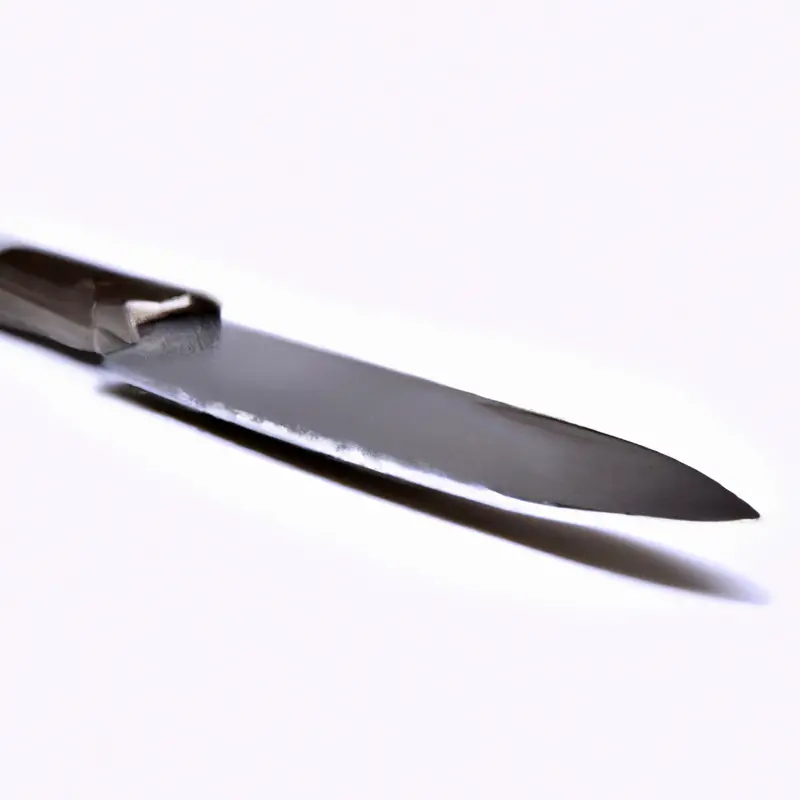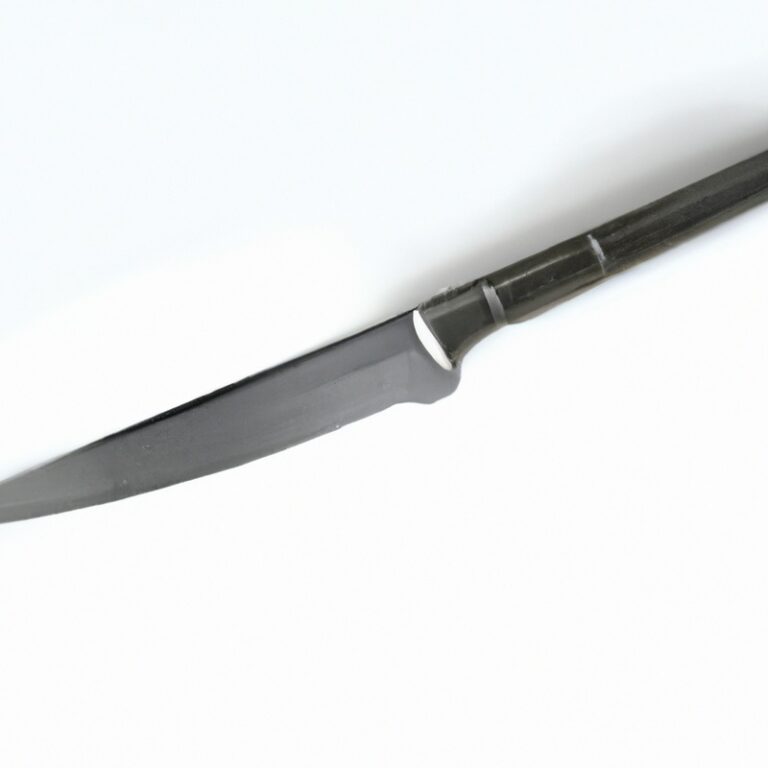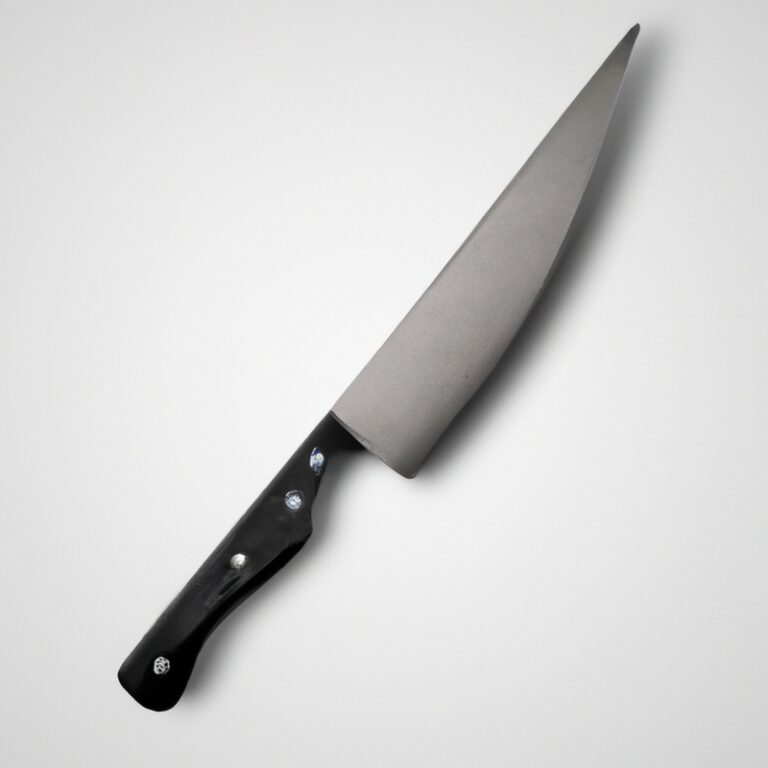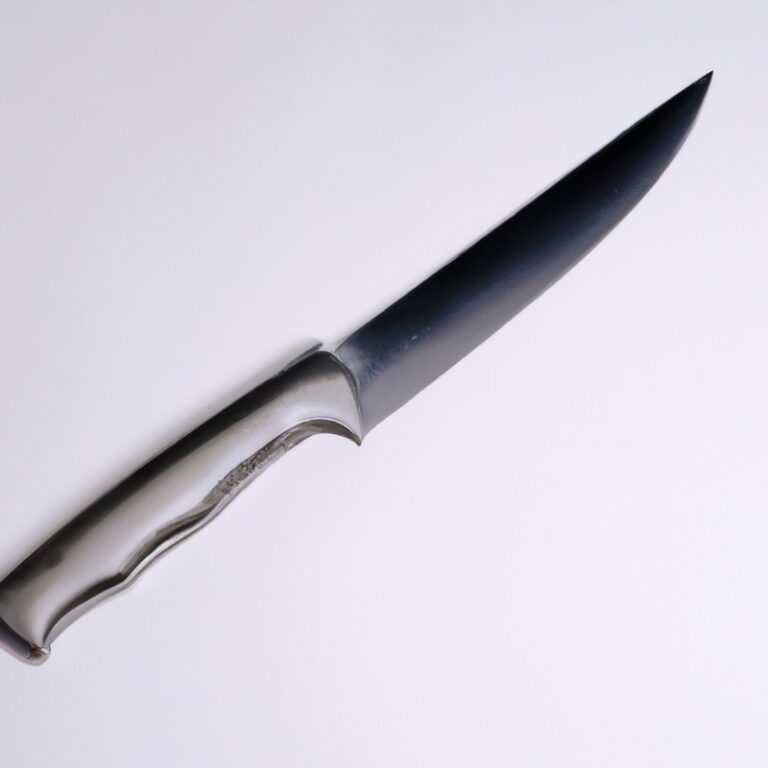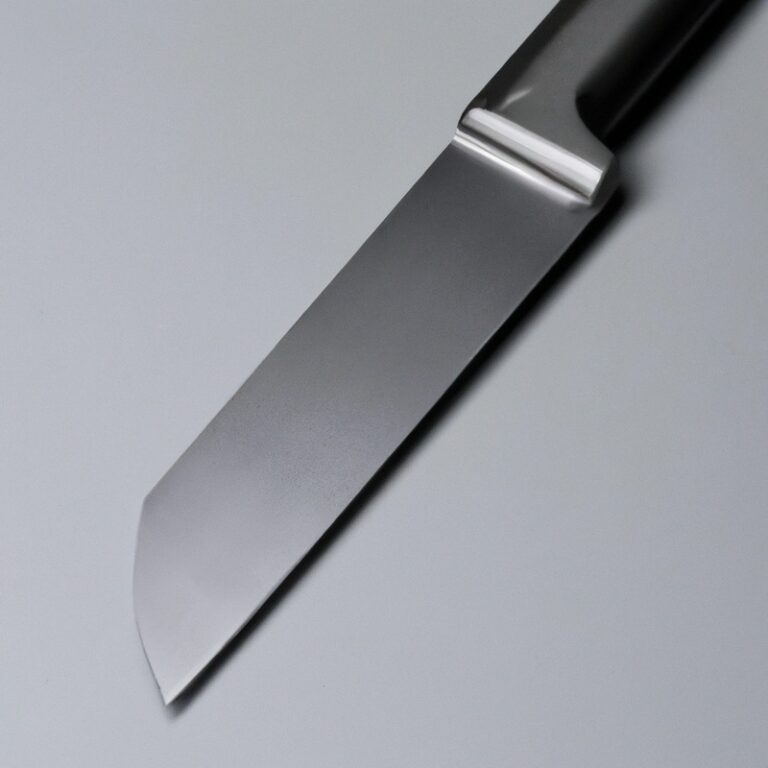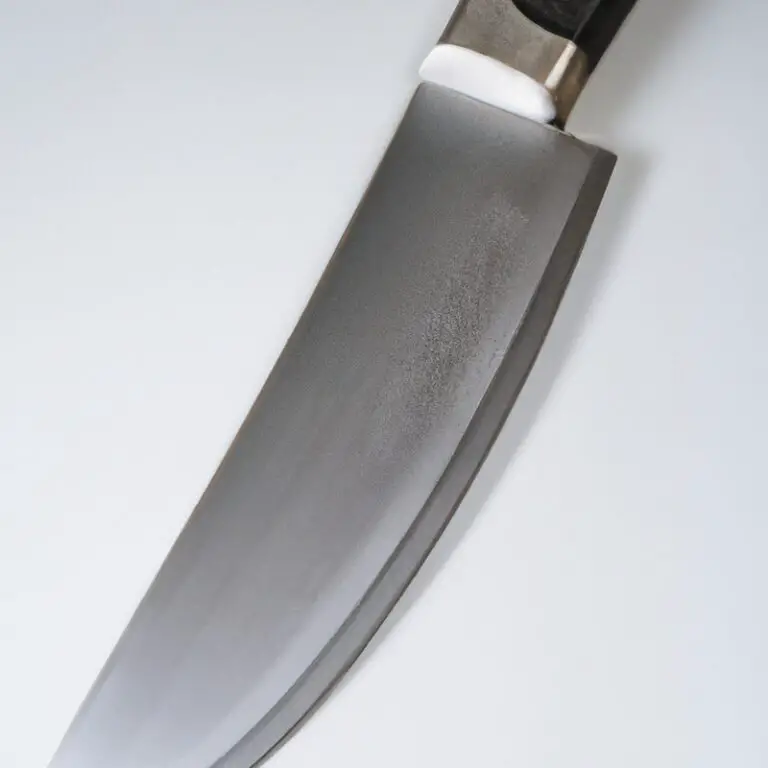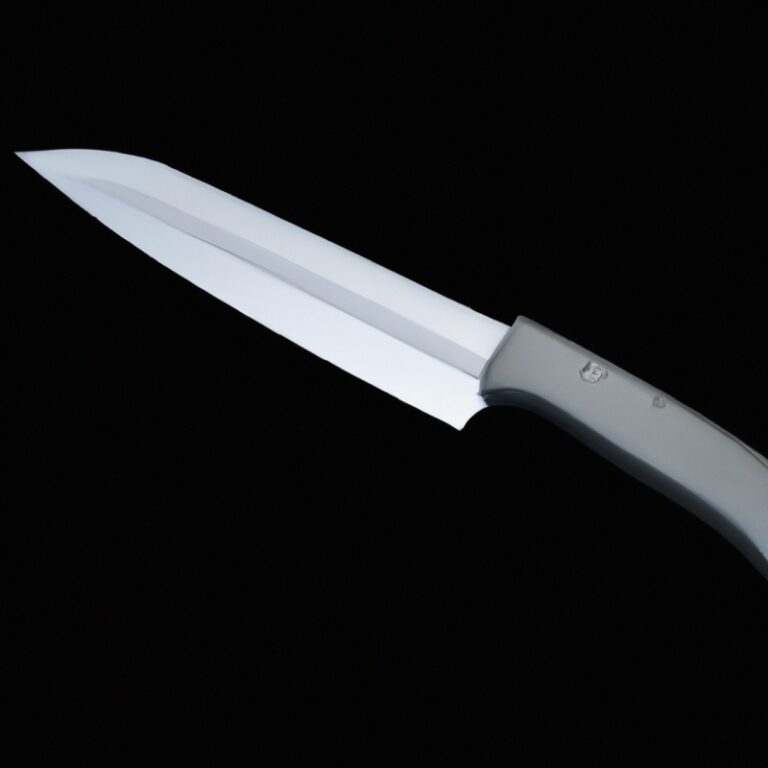What Are Some Recommended Storage Methods For Serrated Knives To Maintain Their Sharpness?
Key Takeaways:
- Avoid storing serrated knives in a knife block or drawer to prevent damage to the blade edges.
- Consider using a knife sheath or blade guard to protect the serrated edges during storage.
- Store serrated knives separately from other kitchen utensils to prevent accidental contact and dulling.
- Regularly hone your serrated knives to maintain their sharpness and prolong their lifespan.
Have you ever struggled with a dull serrated knife that just can’t cut through a tomato? Trust me, I know the frustration.
But here’s the thing: proper storage is the key to maintaining the sharpness of your serrated knives.
In this article, I’ll be sharing some recommended storage methods that will keep your knives razor-sharp and ready for action. We’ll explore options like knife blocks, magnetic strips, blade covers, knife rolls, and more.
Along the way, I’ll also provide some valuable tips and highlight common mistakes to avoid.
So, let’s dive in and give your serrated knives the storage they deserve!
| Storage Method | Pros | Cons |
|---|---|---|
| Knife Block | Keeps knives organized and easily accessible | May dull the serrations if not properly placed |
| Magnetic Strip | Preserves the sharpness of the serrations | Requires wall space and increased caution |
| In-drawer Tray | Protects the blades and keeps them away from children | Knives may collide and become damaged |
| Knife Guard/Cover | Offers excellent blade protection during storage or travel | Additional storage space needed |
Why is proper storage important for maintaining the sharpness of serrated knives?
The unique characteristics of serrated knives
Serrated knives have a distinct feature that sets them apart from their smooth-edged counterparts: their serrations or teeth. These teeth are small, sharp, and evenly spaced along the blade, giving the knife a saw-like appearance.
The unique design of serrated knives allows them to effortlessly cut through tough materials like bread, tomatoes, and citrus fruits, as the serrations grip the surface and provide better control during the slicing motion.
The teeth also reduce the amount of pressure needed to make a cut, making serrated knives ideal for tasks that require minimal effort.
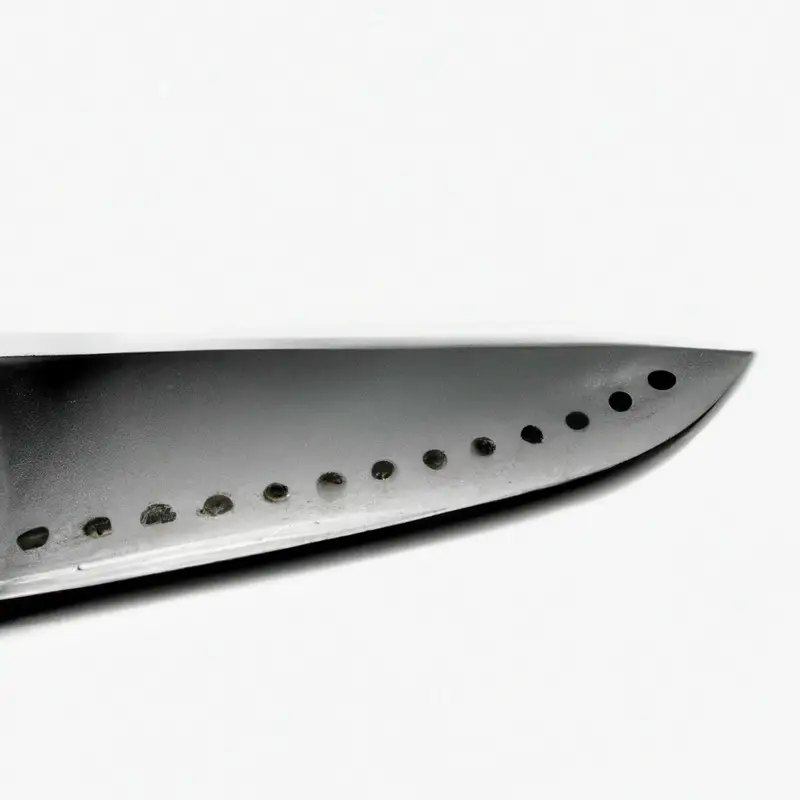
How improper storage affects the sharpness of serrated knives
Improper storage can have a significant impact on the sharpness of serrated knives. Firstly, storing them unprotected in a drawer can cause the blades to rub against other utensils, leading to dulling and damage.
Secondly, storing knives in a cluttered or overcrowded environment increases the risk of accidental nicks and cuts, which can affect the blade’s performance.
Lastly, using improper knife storage methods, such as keeping them in a dish rack or leaving them on a countertop, exposes the blades to moisture and corrosion. Overall, proper storage is crucial for maintaining the sharpness and longevity of serrated knives.
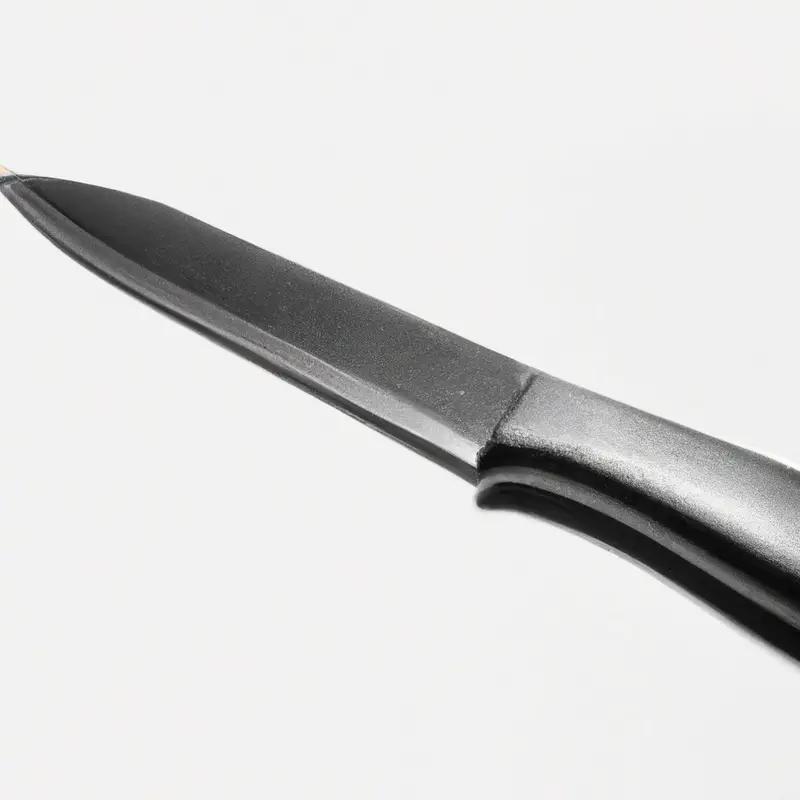
Recommended storage methods for maintaining the sharpness of serrated knives
Option 1: Knife blocks or magnetic strips
Knife blocks and magnetic strips are popular storage options for maintaining the sharpness of serrated knives. Knife blocks provide individual slots for each knife, ensuring they stay upright and separated, reducing the risk of blade damage.
Magnetic strips, on the other hand, securely hold knives in place using magnetic force, allowing for easy access and visibility.
Both options help protect the serrated edges from rubbing against other utensils or surfaces, keeping them sharp and ready for use.
Option 2: Knife guards or blade covers
Knife guards or blade covers are a great option for storing serrated knives. They provide protection for the sharp edges of the knives, preventing them from coming into contact with other utensils or surfaces that could dull the blades.
Knife guards are usually made of durable materials like plastic or silicone, and they can be easily slipped onto the blade of the knife.
This option is convenient for both home and travel storage, as it keeps the knife sharp and safe while also preventing any accidents or damage. When choosing a knife guard or blade cover, make sure it fits properly and securely to provide effective protection for your serrated knife.
Option 3: Knife rolls or sheaths
Knife rolls or sheaths are a great option for storing and protecting serrated knives. They provide a secure and organized way to store your knives, preventing them from rubbing against other utensils or surfaces that could dull the blades.
Additionally, knife rolls and sheaths are portable, making them ideal for chefs or home cooks on the go.
They also help to maintain the sharpness of the serrated edges by keeping them protected from accidental bumps or knocks. Just make sure to clean and dry your knives before storing them in a knife roll or sheath to prevent any moisture or residue buildup.
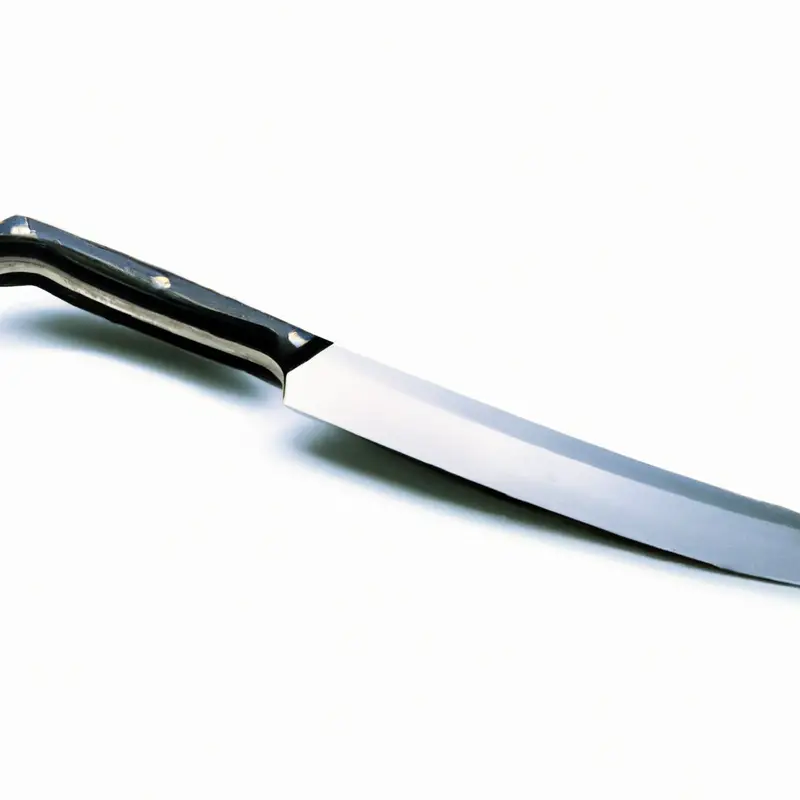
Option 4: In-drawer knife organizers
In-drawer knife organizers are a great option for storing serrated knives, as they provide a safe and organized space to keep your knives. Here’s why they are a good choice:
- Protection: In-drawer organizers have individual slots or compartments for each knife, preventing them from rubbing against each other or getting damaged.
- Space-saving: These organizers fit neatly inside your kitchen drawer, saving you valuable countertop space.
- Accessibility: With your knives stored in a drawer, they are easily accessible whenever you need them, making food preparation more efficient.
- Organization: In-drawer organizers keep your knives organized and prevent them from getting mixed up, ensuring that you can find the right knife quickly.
Remember to choose an organizer that fits the size of your knives and ensure they are dry before storing them to prevent rusting.
Option 5: Wall-mounted knife racks
Wall-mounted knife racks are a great storage option for maintaining the sharpness of serrated knives. They provide a safe and organized way to store your knives while keeping them easily accessible.
By hanging the knives on the rack, you can prevent them from coming into contact with other utensils or surfaces, which can dull the blades.
It also helps to free up counter or drawer space, reducing clutter in your kitchen. Just make sure to install the rack securely and choose one that suits your knife collection.
Tips for maintaining the sharpness of serrated knives
Regular cleaning and drying
Regular cleaning and drying are essential for maintaining the sharpness of serrated knives. To clean, use warm soapy water and a soft sponge or cloth.
Be sure to remove any food residue and dry thoroughly to prevent moisture buildup.
Avoid using abrasive materials or harsh cleaners that can damage the blade. Regular cleaning helps remove dirt and oils that can dull the knife’s edge.
Drying is equally important to prevent rust and corrosion.
After cleaning, make sure the knife is completely dry before storing it to ensure its longevity and sharpness.
Proper cutting surface
To maintain the sharpness of your serrated knives, it’s important to use a proper cutting surface. Avoid cutting on hard surfaces such as glass or ceramic, as they can damage the serrations.
Instead, opt for softer materials like wood or plastic cutting boards.
These surfaces are gentler on the knife’s edge and help to preserve its sharpness over time. Additionally, using a cutting board with a groove or well to catch juices will prevent excessive moisture from dulling the blade.
Avoiding dishwasher use
To maintain the sharpness of your serrated knives, it is best to avoid using the dishwasher. The high heat and harsh detergents can damage the blade and dull the serrations.
Instead, hand wash your knives using warm, soapy water and a soft sponge or cloth.
Rinse them thoroughly and dry them immediately to prevent any water spots or corrosion. Taking the extra step to wash your serrated knives by hand will help preserve their sharpness and extend their lifespan.
Regular honing and sharpening
Regular honing and sharpening are essential for maintaining the sharpness of serrated knives. Honing realigns the blade’s edge, while sharpening removes metal to create a new edge.
To hone the knife, use a honing rod or sharpening steel.
Hold the rod at a slight angle and glide the serrated edge along the rod. Repeat on the other side.
For sharpening, consider using a serrated knife sharpener or send it to a professional.
Regularly honing and sharpening your serrated knives will help them stay sharp and efficient in the long run.
Common mistakes to avoid when storing serrated knives
Storing knives unprotected in a drawer
Storing knives unprotected in a drawer is a common mistake that can damage the sharpness of serrated knives. When tossed together with other utensils, the knives can rub against other objects, causing the blades to dull or chip.
Additionally, the blades may become exposed to moisture, leading to rust and corrosion.
To maintain the sharpness and longevity of your serrated knives, it’s important to store them properly in a dedicated knife block, sheaths, or blade covers. This will protect the blades from unnecessary wear and tear and help keep them sharp for longer.
Storing knives in a cluttered or overcrowded environment
Storing knives in a cluttered or overcrowded environment is a common mistake that can lead to damage and dullness. When knives are haphazardly thrown into a drawer or piled on top of each other, the blades can rub against one another, causing the edges to become dull or even chipped.
Additionally, the risk of accidents increases when knives are stored in a cluttered area, making it harder to locate and retrieve them safely.
To maintain the sharpness of your serrated knives, it is important to store them in a designated space that allows for proper organization and protection.
Using improper knife storage methods
Improper knife storage methods can greatly affect the sharpness and overall condition of your serrated knives. One common mistake is storing knives unprotected in a drawer, where they can easily get damaged and become dull due to friction with other utensils.
Another mistake is storing knives in a cluttered or overcrowded environment, increasing the risk of accidents and causing blades to rub against each other.
Using improper storage methods can lead to chipped, bent, or dull serrations, reducing the effectiveness and safety of the knife. To maintain the sharpness of serrated knives, it’s important to store them properly using knife blocks, blade covers, knife rolls, or wall-mounted racks.
Final Verdict
Proper storage is essential for maintaining the sharpness of serrated knives. Serrated knives have unique characteristics that require special care, and improper storage can lead to dullness and damage.
I recommend using knife blocks or magnetic strips, knife guards or blade covers, knife rolls or sheaths, in-drawer knife organizers, or wall-mounted knife racks for storage.
Additionally, regular cleaning and drying, using a proper cutting surface, avoiding dishwasher use, and regular honing and sharpening are key to preserving the sharpness of serrated knives. By following these storage methods and maintenance tips, you can ensure that your serrated knives remain sharp and effective for a long time.

